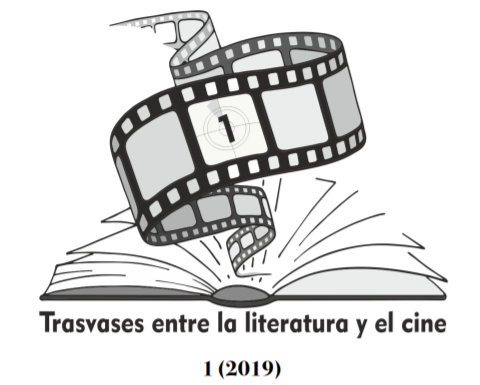In the footsteps of Sadako. The spectrum of literature taken to the cinema
DOI:
https://doi.org/10.24310/Trasvasestlc.v0i1.6728Keywords:
literature, cinema, film adaptation, Koji Suzuki, Hideo Nakata, Ringu, J-horrorAbstract
At the end of the last century the so-called J- horror (Japanese horror) revolutionized the genre of film horror globally due to the success achieved by Ringu (Hideo Nakata, 1998). Naturally, when a film innovates so successfully, a huge flow of debtor productions flooded the screens around the world trying to emulate it. However, Sadako, the well-known movie ghost, actually came from a novel written in 1991 by Koji Suzuki. Our task in this article will be to Delve into the mechanisms that explain this transfer between literature and cinema, touching key aspects such as Nakata's vital experience when he filmed his adaptation, or for what reasons the original novel should not be considered within the J-horror genre.
Downloads
Metrics
Publication Facts
Reviewer profiles N/A
Author statements
Indexed in
-
—
- Academic society
- N/A
- Publisher
- Universidad de Málaga
References
Escobar López, A. (2008). El cabello femenino en Japón. En Elena Barlés y David Almazán (Coords.) La mujer: realidad y mito. Colección Federico Torralba de estudios de Asia Oriental. Zaragoza. pp. 129-143.
Suzuki, K. (2015. Dark Water. Gijón: Satori.
Suzuki, K. (2003). The Ring. Londres: Harper Collins.
Malpartida, R. (2010) “Dos estéticas del Horror: Hideo Nakata y Takashi Shimizu”. En Robles Ávila, A. (coord.) Cine fantástico 100% Asia. Málaga: UMA.
Malpartida, R. (2014). Espectros de cine en Japón. Entre la literatura, el cine y las nuevas tecnologías. Gijón: Satori.
Míguez, A. (2016). El fantasma en el cine japonés de posguerra. De rasgo folclórico a icono feminista [Tesis Doctoral]. Córdoba: UCO
Moscardó, J. (2012). Horror Oriental. Madrid: Arkadin Ediciones.
Olivares, J. A. (2005) The Ring. Una Mirada al Abismo. Madrid: Ediciones Jaguar.
Soler, J. Butoh, (2008). Medio siglo de rebelión en danza. Acotaciones, revista de investigación teatral. Nº XX. pp. 23-46.
Downloads
Published
How to Cite
Issue
Section
License
All authors published in this journal accept the following copyright terms:
a. Authors retain their authors´ rights (copyright) and grant First Publication Rights to the journal, which whill be published under a the Creative Commons Attribution-NonCommercial-ShareAlike 4.0 International (CC BY-NC-SA 4.0) license. All about this license is available in the following link: <http://creativecommons.org/licenses/by-nc-sa/4.0>
b. Authors may separately establish additional agreements for the non-exclusive distribution of the version of the work published in the journal (e.g. including it in an institutional repository, or publishing it in a book) with an acknowledgement of its initial publication in this journal.
c. Authors are allowed and encouraged to disseminate their work electronically (e.g. in institutional repositories or on their own website) as this can lead to productive exchanges, as well as earlier and more extensive citation of published work.
The author is responsible for obtaining permission from the copyright holder when using copyrighted materials.
This electronic journal is published by University of Málaga (UmaEditorial), thus it is necessary to cite the origin of any partial or total reproduction.








22.png)










